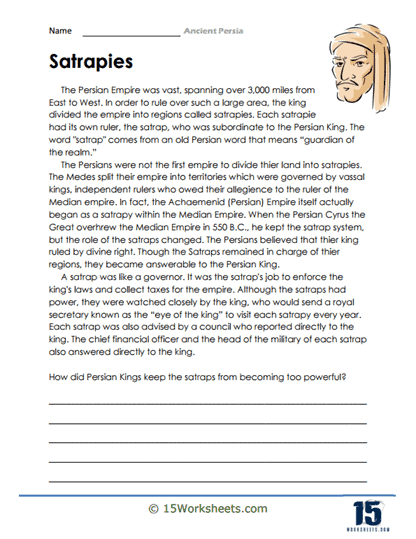Satrapies

Worksheet Description
The Persian Empire was vast, spanning over 3,000 miles from East to West. In order to rule over such a large area, the king divided the empire into regions called satrapies. Each satrapie had its own ruler, the satrap, who was subordinate to the Persian King. The word “satrap” comes from an old Persian word that means “guardian of the realm.”
How did Persian Kings keep the satraps from becoming too powerful?
To effectively engage with this worksheet, a student should start by reading the entire passage attentively to grasp the concept of satrapies and their importance in the Persian administrative system. Key terms and names, such as “satrap” and “Cyrus the Great,” should be noted for further research or discussion. After thoroughly understanding the text, the student can ponder the concluding question, drawing insights from the provided information and potentially seeking additional resources to form a well-informed answer. Writing a thoughtful response to the question will require synthesis of the material and a deeper reflection on historical governance mechanisms.
This worksheet aims to enrich students’ understanding of the Persian Empire’s administrative intricacies, highlighting the pivotal role satrapies played in its governance. Through a detailed narrative, learners gain insight into how vast empires managed territories and maintained centralized control. The emphasis on the evolution of the satrapy system fosters an appreciation for adaptive governance over time. Furthermore, the concluding question encourages critical thinking, prompting students to contemplate historical strategies that ensured balance of power and prevented regional leaders from overshadowing central authority.
